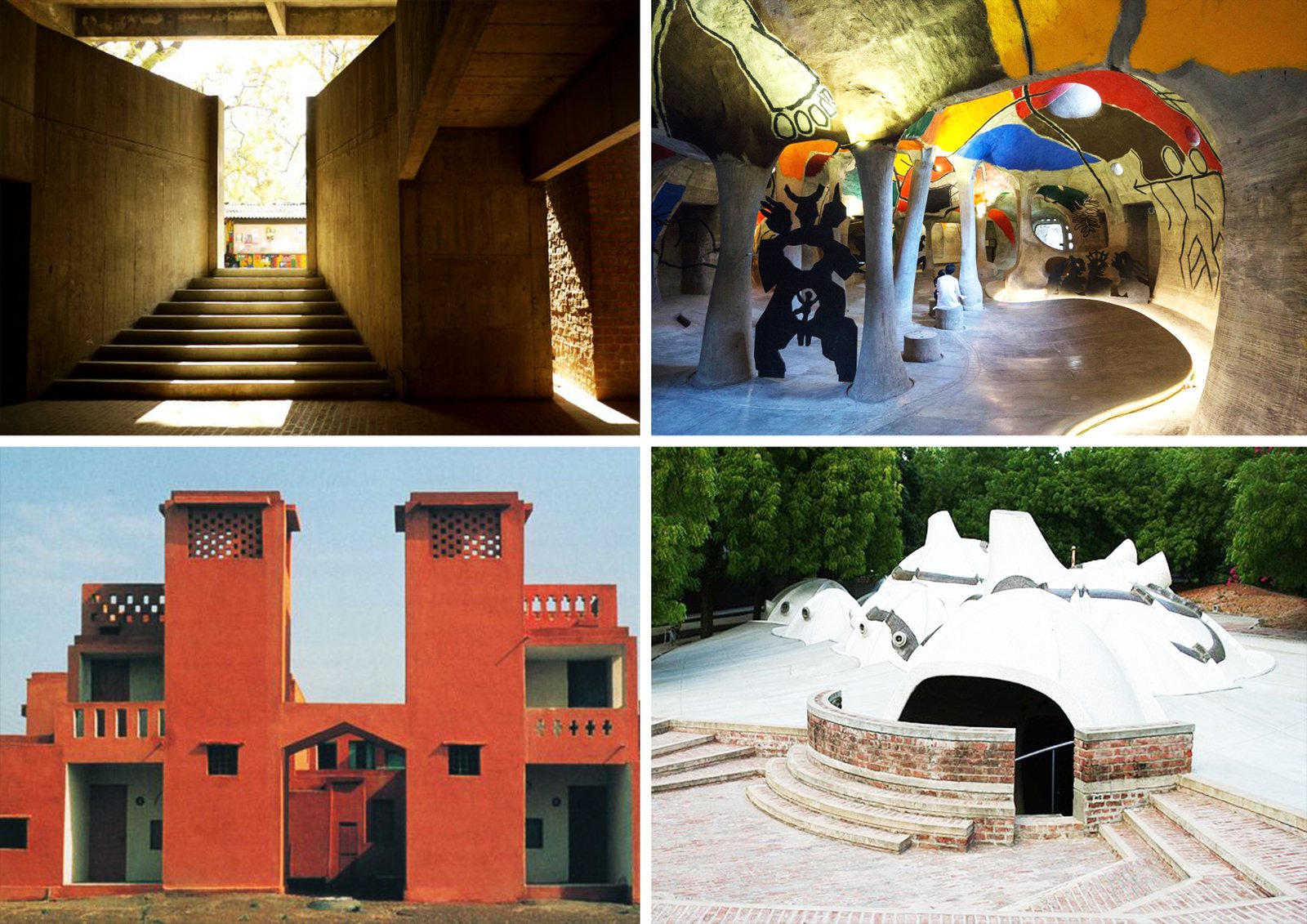Understanding the culture, tradition, and infrastructure of the Indian state, Architect B. V. Doshi built his style of design around the most authentic materials and planning systems. There is a beauty in the buildings that he built. There is a sense of relativity and association and to achieve the intricate perfection in simplicity and minimalism, he dedicated 70 years of his master craftsmanship to design, teach and build for the people of this country.
The use of local materials and simple lines to draw a geometrical base for his institutional buildings has set a mark for future architectural enthusiasts. Having worked with Le Corbusier in the early years of his career, Architect Doshi seized the opportunity of learning the system and technicality in Architectural design during the 1950s.
Balkrishna Doshi is indeed an internationally famed Architect but he did not allow ‘Internationalism’ blind his approach towards Modern Indian Architecture!

Design and Planning of CEPT, Ahmedabad
An ideal blend of built and unbuilt spaces it’s the context, CEPT University depicts an environmental sanctuary. It utilizes local materials, techniques, and minimal geometry. One of the features that promote student’s engagement in the campus is its open planning which covers most spaces in green carpets. There are plenty of natural light sources including skylights in the working studios along with wide-open windows.
Brick is the prime building material used in the campus with walls as well as public spaces flooring done in it. Concrete subtly slides in between the brick and mortar facades to highlight the skeleton of the buildings.
The Green enclosure- Sangath Studio, Ahmedabad
Sangath Studio is the working studio and office space for the Vastu Shilpa foundation headed by B. V. Doshi. There is an unexplainable beauty about this working space of the Architect which reflects his personality and his style of design.
The most important feature within the campus is the vaulted roof covered in mosaic tiles over the cuboidal spaces which allow natural light to enter inside at all times. There is a calm and quiet vibe throughout the campus. It makes an individual aware of his existence around nature. Again, the built spaces become a small part of the large canvas painted in green but still manages to leave a mark. There are water elements in the transitional spaces that continuously make a relaxing sound within the studios.

The design of ‘Aranya’ low-cost housing, Indore
Along with the spaces of personal interest, Balkrishna Doshi also believes that Architecture should be built ‘for the people’. He has worked for the design of low-cost housing in Indore, way before any model for low-cost housing was established. There was a systematic approach towards designing these residential units which followed a grid at most times.
The concept was to make terraces and common spaces within the region, a series of interactive spaces. Understanding the lifestyle of people, the verticality was minimized and more intricately weaved courtyards were included in the design. Staircases in this project made a signature statement for many other design projects later on.
This low-cost housing project won the Aga Khan Award for Architecture for Architect B. V. Doshi in the year 1996.
Amdavad ni Gufa, Art Gallery, Ahmedabad
This permanent Art Gallery to showcase the works of Maqbool Husain was completed in the year 1995. The habitable spaces of this entire project are submerged under the ground level making an individual picture it as a cave. It is intelligent planning of Mr. Doshi who considered the hot and dry climate of the region who planned his spaces underground, while at the eye level, a person only can view the domes.
The inspiration for all of the design elements in the campus is drawn from the ancient Indian Architecture including the domes, shaping the plan and materials. It proved to be a design not generally seen as a part of the Indian skyline!
Balkrishna Doshi won the Pritzker Architecture Prize in 2018 which made him the first Indian Architect to establish his place in the list. The Architect has invested in simple, local and sustainable Architecture developing his own authentic style of Architectural design and planning. There is a connection with nature within his buildings which engages any individual in his work.

